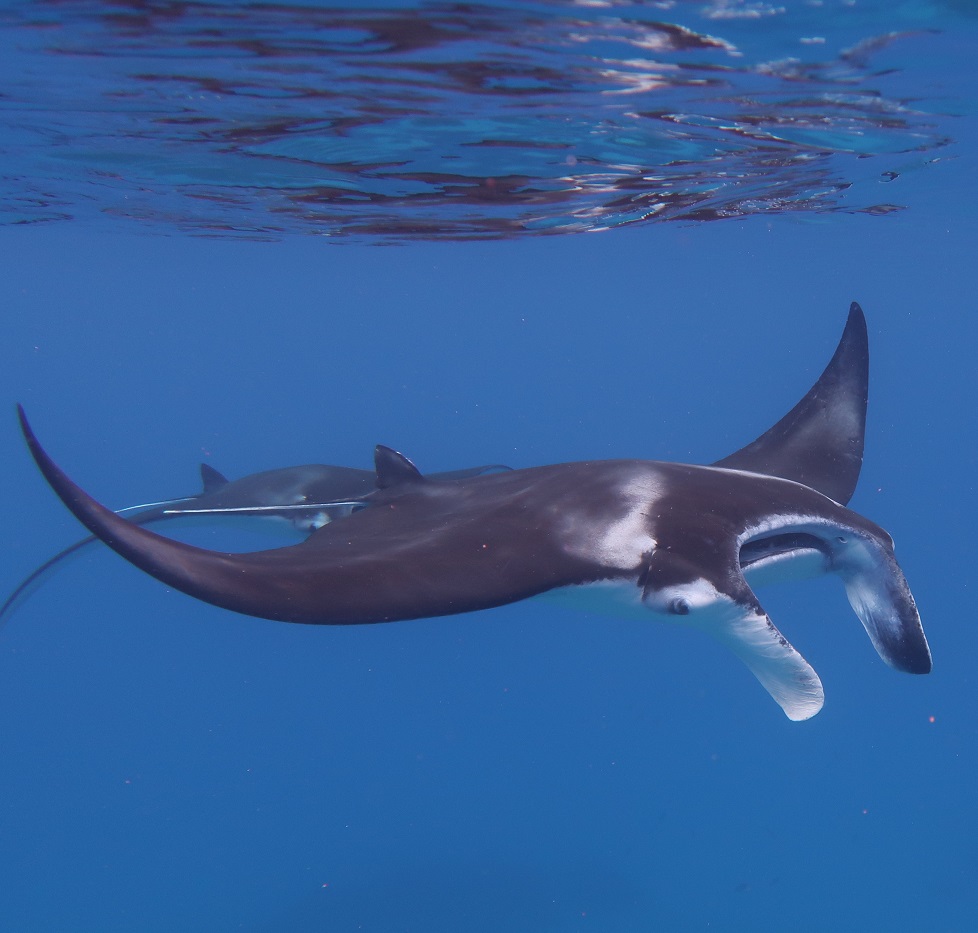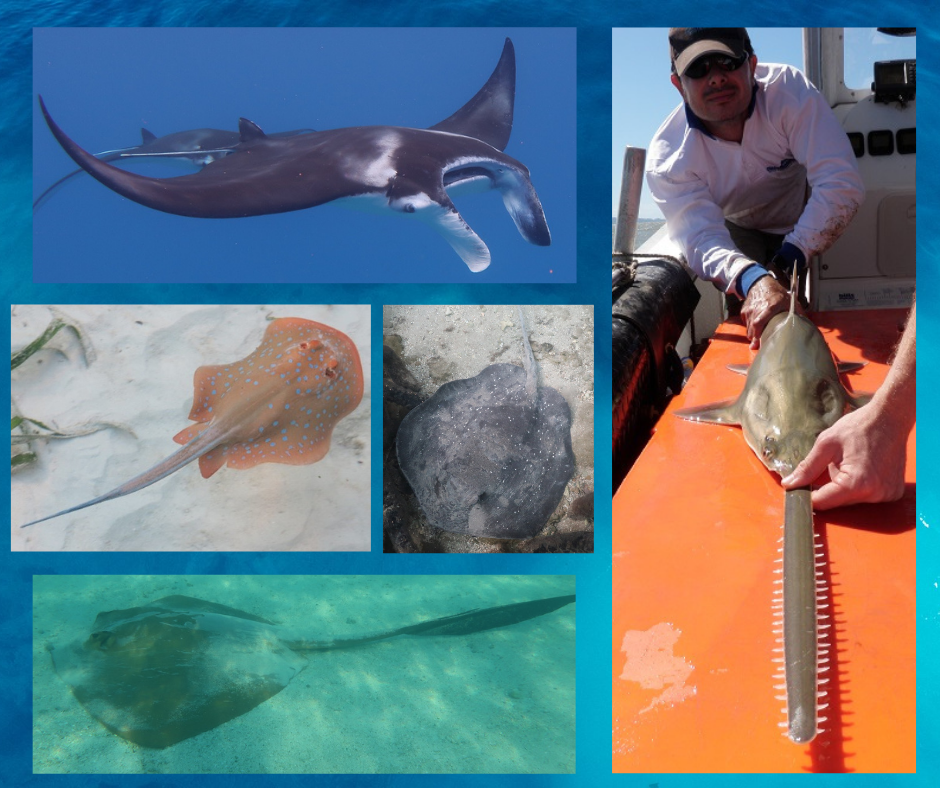
New IMAS research is assessing the rich ray fauna that lives in Australian waters, to understand how the threat of incidental catch across many fisheries is impacting their population health.
Australia has 132 ray species in our ocean territory, from the tropics to sub-Antarctic seas, and many are only found here. Closely related to sharks, rays usually have flattened bodies, and include manta rays, stingrays, skates, wedgefish, guitarfish and more.
IMAS project leader, Professor Colin Simpfendorfer, said rays are not specifically targeted by commercial or recreational fishers in Australia and only a few are caught by Indigenous fishers.
“However, many are regularly taken as incidental catch and some are kept for their flesh, fins and other products,” he said.
“This has led to a number of rays now being listed as species of conservation concern, so understanding the effect incidental catch has on ray populations is an important step in ensuring they remain in a healthy state.”
 The two-year research is funded by the Fisheries Research and Development Corporation, with the results to be published in FRDC’s Status of Australian Fish Stocks Reports.
The two-year research is funded by the Fisheries Research and Development Corporation, with the results to be published in FRDC’s Status of Australian Fish Stocks Reports.
“The assessments will be easily accessible to all Australians, and will be especially valuable for resource managers, policy makers, fishing industry groups and conservation groups,” Prof Simpfendorfer said.
When completed, the Ray Report Card will be merged with the Shark Report Card to provide a single national Shark and Ray Report Card which also includes the 14 species of Australian ghost sharks not previously considered.
Images - photographer: Colin Simpfendorfer
Reef manta Mobula alfredi (top), Narrow sawfish Anoxypristis cuspidata (R), Blue-spotted lagoon ray Taeniura lymma (L), Mangrove whipray Urogymnus granulata (centre), Cowtail stingray Pactinachus atra (bottom)
Published 26 November 2021